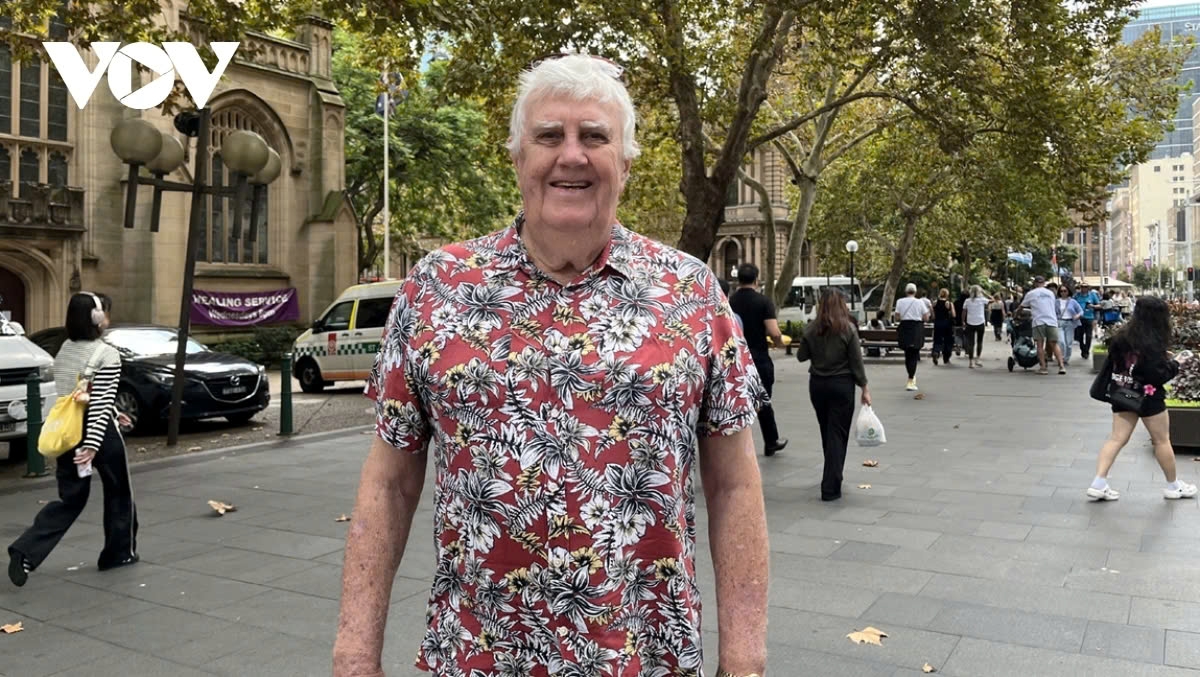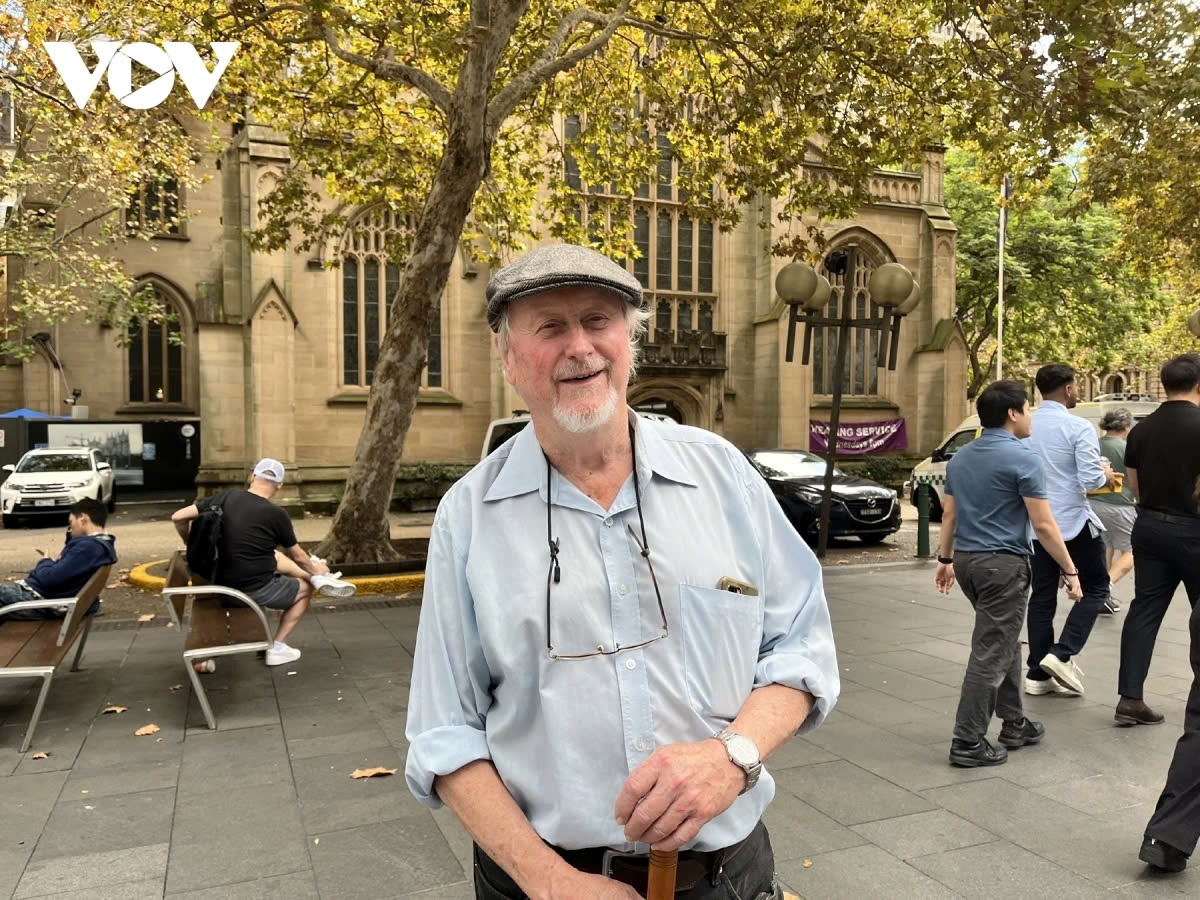Live witnesses recall anti-Vietnam War movement in Australia
VOV.VN - There was a strong anti-Vietnam War movement in Australia in the late 1960s and early 1970s, that, along with the similar movement globally, forced the Australian Government to withdraw its troops from Vietnam.
As Vietnam is commemorating the historic victory of April 30, 1975, putting an end to the 30-year protracted war of resistance against American imperialism, Canberra based VOV correspondents have met several Australians engaging in that anti-war movement those days to learn about their campaign efforts.
Australia’s engagement in the US-waged war in Vietnam, known internationally as Vietnam War, began in 1962 with the deployment of 30 military advisors. Over the following years, Australian troop numbers increased significantly, sparking internal controversy.
The anti-war movement erupted two years later when Australia introduced conscription, forcing young men into military service, and as graphic images of the conflict began appearing on national television.

Joe Deakin, who was just 16 at the time, joined the Communist Party of Australia and quickly became involved in anti-war activities. Later, as a member of the Seamen’s Union of Australia, he and fellow seafarers became leading voices against the war.
The war was not right and not appropriate, said Deakin, adding sailors had ample opportunities to learn about global events, including the history of Vietnam’s resistance against colonial powers, such as the French kicked out of Vietnam by the Viet Minh under the leadership of Ho Chi Minh.
Through shared discussions, union members gained a deep understanding of Vietnam’s struggle, and seafarers all knew that the actions of the US in Vietnam, both in the North and the South, were unacceptable. As the movement expanded, they took time to learn more about the extreme measures adopted by the US, further solidifying their commitment to opposing the war.
Initially, union seafarers held informal discussions, but these soon expanded, drawing in university students eager for firsthand information. With seafarers distributing flyers and sharing their experiences, the movement grew rapidly, bridging the gap between workers and students.
In a powerful demonstration of solidarity, the Seamen’s Union of Australia played a pivotal role in the anti-Vietnam War movement. Union members, many of whom opposed the war, began sharing critical information with fellow workers and students. Their efforts gained traction as numerous young students joined the cause, attending union meetings and spreading the word within their dormitories.

One of those students was Rowan Cahill, who in 1965, as a student at the University of Sydney, was drafted for military service. Refusing to participate in what he viewed as an unjust war, Cahill became a prominent figure in Sydney’s anti-war movement.
Cahill said he helped to organise demonstrations, publish articles, and connect student activists with the trade union movement, forming a larger collective force against the war. Despite never personally meeting the workers or seafarers involved, the shared opposition to the war served as the powerful catalyst that brought them all together in solidarity. The movement, fueled by a shared desire for peace, became a significant national force, drawing widespread participation from across the community.
By 1969, the anti-war movement had surged. Mass marches and protests took place across Australia. In May 1970, the movement reached its peak when over 200,000 Australians joined the first nationwide protest against the war.
Cahill recalled, in a historic demonstration, approximately 25,000 people gathered at Sydney Town Hall to protest Australia’s engagement in the Vietnam War. The rally featured a sea of signs, banners, and loudspeakers calling for an immediate withdrawal of troops from Vietnam, the end of conscription, and a halt to the US-led war efforts.
The protest marks a significant shift in public opinion, as Australia’s participation in the Vietnam War saw widespread support when troops were initially sent in 1965. At that time, most Australians backed both the war and conscription. However, by 1970, the mood had dramatically changed, with increasing opposition to the war evident in protests across the country.

Beyond protests, activists lobbied politicians, wrote letters to Australian and US officials, and continually pressured the government to end its involvement. Though immediate results were limited, the movement helped sway public opinion and built immense pressure on authorities.
The announcement by the US in mid-1969 that it would begin withdrawing troops gave new energy to Australian activists, who continued their efforts until 1971 when Australia withdrew most of its troops.
In the midst of the global anti-war movement, the announcement in mid-1969 by the US that it would begin withdrawing troops from Vietnam sparked renewed hope among the Australian public. This development further fueled the anti-war protests in Australia, with people urging the government to follow suit and bring Australian troops home. The streets were filled with demonstrators throughout 1970 and into mid-1971, with participation swelling to approximately 350,000 people.
The movement reached its peak during this period, as Australians demanded an end to their involvement in the Vietnam War. The protests gradually subsided towards the end of 1971, coinciding with Australia’s decision to withdraw most of its troops from Vietnam. The movement’s persistence and growing support played a key role in influencing the government’s actions, marking a significant chapter in Australia’s history of anti-war activism.





